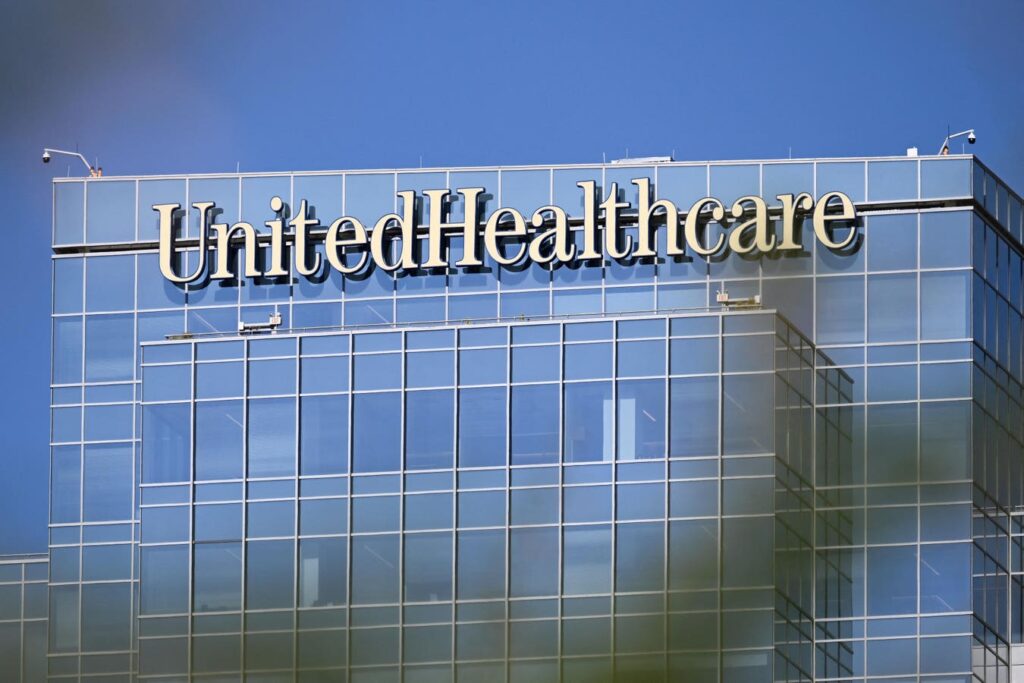The U.S. healthcare system is the best in the world for complex care. We have the most innovative drug companies, the best medical devices, and incredible doctors and surgeons.
The U.S. healthcare system is also the most expensive system in the world.
One key component of the medical system that has long been a point of contention is drug prices. U.S. drug prices are extraordinarily high compared to the rest of the world. The exact same medication that’s sold in the United States is often sold overseas for a fraction of the cost. This pricing disparity has long been a point of consumer dissatisfaction, but elevated inflation and recent executive actions are putting the topic of drug prices back under the microscope.
The history of drug prices in the U.S. and the way in which they’ve risen could be a much longer essay than the article we are writing here – but there are a few key points that are worth discussing. In particular, we want to call out how the industry has shifted over time to pull pricing power away from the drug companies and to put the power in the hands of insurance companies. The shift involves obvious conflicts of interest, but there are also significant nods to potential efficiency gains and economies of scale. The issue is nuanced and it’s difficult to pinpoint what the right balance is to ensure we have access to the best medicine, at reasonable prices, without stifling innovation.
From Healthcare Cost-Saver to Market-Maker
If there’s any single culprit behind high drug prices, it has to be pharmacy benefit managers (PBMs). For decades, PBMs have quietly amassed power in the U.S. healthcare system. They are the penultimate corporate middlemen – negotiating prices, controlling formularies, and ultimately determining what shows up on your insurance plan’s covered drug list.
Their influence on drug prices has grown substantially as their parent companies continue to acquire and vertically integrate specialty pharmacies, provider networks, and rebate aggregators into their business models. If you don’t know what any of those things mean or how they interact, don’t be discouraged. The opacity of the business model is one of the key components that allows PBMs and their parent companies to generate profits and keep drug prices moving higher.
So, what is a pharmacy benefit manager? Decades ago, as employer-sponsored health insurance grew to be more complex, insurers needed help managing drug benefits. Patients needed access to a growing number of drugs, and insurance companies needed to know which ones to cover. PBMs emerged to fill this administrative gap, acting as intermediaries to process claims, negotiate pharmacy contracts, and provide “formularies” – lists of drugs that would be covered under an insurance plan. The job of a PBM, on paper, is to help health insurance plans manage the cost and utilization of prescription drugs. Simple enough in theory – the PBM sits in the middle between doctors prescribing the drugs, pharmacies distributing the drugs, and the insurance companies who are paying for the drugs. Put simply, they were making sure everyone is on the same page.
Over time, the economics evolved. PBMs began to consolidate, preaching that bigger scale meant more negotiating power with the drug companies to lower list prices, which in turn meant better deals for the insurance companies and for the end patient. Unfortunately, increased bargaining power also leads to potential conflicts of interest and more opportunities for PBMs to drive profits towards their own bottom lines. Drug companies know that they’re going to have to pay the PBMs to get their drugs approved and put on formulary lists. Without being on a formulary list, that drug isn’t going to be covered by insurance, which means nobody is going to use the drug. That’s where the shenanigans start.
Drug companies actually end up being incentivized to increase drug prices, knowing they’re going to have to give rebates and concessions to the PBMs. This rebate system ultimately ends up being the biggest conflict of interest, and the biggest hurdle to affordable drug prices. PBMs are supposed to put drugs on formularies because they’re effective for patients, not because they’re getting big rebates from the drug companies. But you can easily see where the PBM might start to leverage their situation to make a profit. The higher the list price of the drug, the bigger the rebate, and the more potential earnings for PBMs. The PBM has all the leverage, and crucially, end patients aren’t really part of the savings equation.
And, as if that wasn’t messy enough, the PBM’s potential conflicts of interest get even messier when the PBM isn’t an independent company.
Does Healthcare Care For Your Health
Over the years, there’s been intense consolidation within the PBM market, with the three major players – CVS, UnitedHealth, and Cigna – now controlling more than 80% of it. Notice anything about those three companies? All three of them aren’t really known as being PBMs. They’re all actually insurance companies. That’s right, the companies who determine what medications are covered or not covered are the same companies who are paying for the medication. If United Health goes to a drug company and says, “pay us a bigger rebate” and we’ll make sure that your drug is on the list of approved drugs for our patients, it’s hard to see a scenario where the drug company says no.
Tracking the flow of money tied to a single drug transaction can be incredibly complex, given the many interrelated players. Take, for example, a patient buying insulin at the pharmacy. The pharmacy first purchased the insulin in bulk from a wholesaler, who bought it from the manufacturer. Before the pharmacy can even sell the drug to an insured patient, it has to be approved for coverage – placed on the formulary – by the PBM. The PBM is probably only putting the drug on the formulary if they’re going to get some rebates from the drug manufacturer. The patient also likely needs to have a prescription for their drug, which means they needed to talk to their doctor – someone preapproved as being in network by the insurance plan.
The patient not only pays premiums on their insurance, but then also has to pay a co-pay at the pharmacy when it’s time to buy the drug. Given that the pharmacy might be owned by one of the large insurance companies, the co-pay is likely a source of profit for the insurance company as well, either directly or indirectly. If that all sounds confusing, it’s because it is! The integration of so many players under one umbrella creates enormous complexity.
Of course, the vertical integration of insurance with PBMs and physician groups could also provide scale-based efficiencies. It’s natural for these companies to combine like this. Scale brings benefits when you’re trying to make sure patients have access to different kinds of doctors, and scale is a huge factor in reducing the cost and risk associated with insurance pools. And theoretically, larger groups should have more bargaining power to demand price cuts from the drug companies.
Unfortunately for the insurance companies though, the vertical integration has made it hard for them to redirect the blame for rising costs towards anyone else.
Trump Targets Lower Drug Prices
In an effort to lower drug prices in the U.S., President Trump recently issued an executive order promoting the Most Favored Nation (MFN) pricing model. This policy aims to align what Americans pay for certain medications with the lowest price paid by other developed countries. The move faced immediate pushback from both drug manufacturers and the parent companies of PBMs, who stand to lose significantly if list prices are slashed. Remember, the rebates the PBMs get are generally going to be higher if the list price for the drug is higher.
In our opinion, the move to shake up drug pricing is misguided. The current practice of localized pricing works to find an equilibrium between maximizing access to the drug while also maximizing the drug maker’s ability to generate a profit. Artificially lowering drug prices in the United States by benchmarking to international prices simply ensures that the rest of the world has less access to our drugs, while accessibility for Americans is unlikely to change for the better. That’s because drug accessibility here in the US is a function of not only price, but also of formulary design and insurance coverage for the medication. Lower list prices could end up meaning smaller rebates and reduced incentives for insurance companies to provide some sort of drug coverage.
Forcing drug makers to offer their drugs at lower prices may also stifle innovation. While nobody likes paying high prices, companies need to be able to generate a return on their investment in order for a project to be viable. Keeping that incentive system in place is important.
Fortunately, the executive order left room for negotiation; price targets for the U.S. market remain undecided. However, the implications are clear. People are fed up with the high cost of healthcare and politicians looking to garner favor with their voter bases are going to keep on looking for opportunities to attack the space. The opaque profit model and conflicts of interest inherent in the current business structure are easy political targets.
PBMs vs. Healthcare Regulation
PBMs have long profited from the arbitrage between inflated list prices and manufacturer rebates. If MFN-style reforms take hold, PBMs may see their margins compress and rely more on flat administrative fees rather than back-end rebate deals. Increasing bipartisan scrutiny and pressure to lower drug prices generally threaten the opacity of their business model, potentially sparking further consolidation as legacy PBMs scramble to defend market share and margins. Meanwhile, newer market entrants offering direct-to-consumer delivery – effectively bypassing PBMs – could align with the current administration’s embedded directive to facilitate direct-to-consumer purchasing programs at MFN prices.
Expect some form of rebate pass-throughs or the elimination of spread pricing to try to make it into a bill, both of which would dent margins, but would be substantial undertakings. The rise of rebate aggregators, entities often owned by large PBMs that negotiate rebates on behalf of multiple clients, significantly complicates regulatory efforts to trace rebate flows and the logistics of pass-throughs. PBMs, for their part, maintain that these entities and rebates in general help to lower insurance premiums and fund broader plan benefits, but Americans have grown increasingly skeptical that these benefits ever reach them.
For large insurers owning PBMs – like CVS (Caremark), Cigna (Express Scripts), and UnitedHealth (OptumRx) – reform could trigger a shift in profit centers toward more stable revenue sources such as medical services, specialty pharmacy, or basic insurance premiums. But reducing intermediary involvement might also force PBMs to spin off their pharmacy operations entirely. The conflicts of interest clearly run deep in a system where the middleman influences which drugs are covered by insurance while simultaneously owning the pharmacies dispensing those same drugs.
Still, reform momentum is building. Increased transparency could usher PBMs into a new era of accountability and structural change – though whether this benefits patients or merely reshapes profit flows remains to be seen.
Is Healthcare Investable?
Healthcare stocks have had a rough go this year, but the system is still ripe with subsectors set to benefit from continued innovation in artificial intelligence. Playing the politics game and picking the winning PBMs and insurers is likely to leave investors disappointed, but structural tailwinds like AI and an aging population in the US aren’t going away any time soon.
Progress in drug discovery and genetic research has been constrained by trial-and-error methods that are extremely cost-intensive. With AI, we’re entering an era where whole-genome sequencing can be done in hours instead of weeks, and AI models can predict molecular interactions with stunning accuracy. This leap in computational power means we’re not just speeding up what we already do – we’re enabling entirely new approaches to medicine.
As sequencing becomes cheaper and more accessible, the efficacy of drugs only stands to increase. Think about a biotech firm that sequences the DNA of thousands of cancer patients. With AI, it can quickly identify recurring mutations and design drugs that specifically target those genetic flaws, potentially leading to more effective and personalized cancer treatments.
As the traditional PBM model comes under pressure, new pharmacy models emphasizing transparency, affordability, and direct-to-consumer pricing could also gain traction. GoodRx (GDRX) offers cash pay alternatives and coupons that bypass PBMs. Mark Cuban’s Cost Plus Drugs also aims to offer radically transparent pricing by selling drugs at cost plus a flat markup. Even Amazon has entered the arena to offer direct-to-consumer shipments and a direct-pay option that’s potentially cheaper than using insurance. Amazon Pharmacy is expected to be available to over half of the U.S. by the end of 2025.
Ultimately, what was once a sleepy and steady sector of the US economy is starting to become much more dynamic. Drug innovation is accelerating, and established insurer and PBM business models are coming under scrutiny. In a shifting landscape there will be opportunities for savvy investors who look for innovation and can handle volatility and uncertainty.
Read the full article here
















